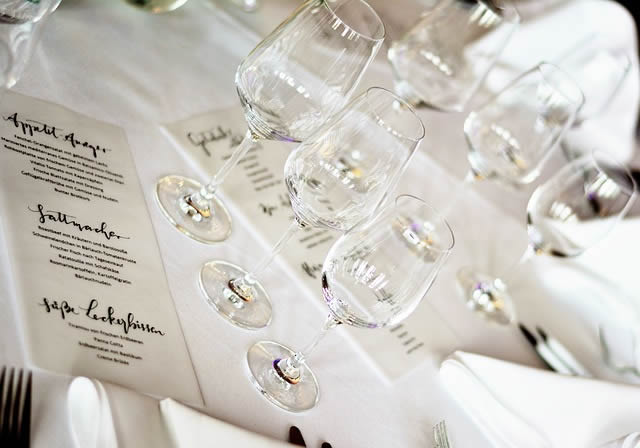先日から「The secret tricks hidden inside restaurant menus -「レストランのメニューに隠された秘密の仕掛け」を読んでいます。

・「レストランのメニューに隠された秘密の仕掛け」(1)
・「レストランのメニューに隠された秘密の仕掛け」(2)
A sweet type
甘い書体The font the menu is written in can convey similar messages;
メニューのフォントによっても同様のメッセージを伝えることが出来る、
for instance an italic typeface conveys a perception of quality.
例えばイタリック体であれば、品質の高さを感じさせるといった風に。
But using elaborate fonts that are hard to read could also have another effect
しかし、読みにくい凝ったフォントを使うと別の影響もあり、
- it could alter how the food itself tastes.
料理の味を様変わりさせる事もある。
A study conducted by researchers in Switzerland found that a wine labelled with a difficult-to-read script was liked more by drinkers than the same wine carrying a simpler typeface.
スイスの研究者の調査によれば、読みにくい文字で書かれたラベルのワインは、シンプルな書体で書かれた同じワインよりも愛飲家に好まれるという結果が出ている。
Spence’s own research has also found that consumers often associate rounder typefaces with sweeter tastes, while angular fonts tend to convey a salty, sour or bitter experience.
またスペンス氏の調査では、消費者は丸みを帯びた書体からは甘味を連想することが多く、角ばった書体からは塩辛さや酸っぱさ、苦さを感じる傾向があることも分かっている。
“Restaurants can play with this to nudge people towards ordering more expensive dishes,” explains Spence, whose recent book Gastrophysics: the New Science of Eating, looked at the issue in detail.
「レストランはこれを利用して、より高価な料理を注文するよう人々を誘導することが出来る」と、彼は最近出版した「Gastrophysics」でこの事を詳しく取り上げている。
But the language on the menu can be just as important, he adds.
だがメニューに書かれている言葉も同様に重要であると、彼は付け加える。
After all, a “grass-fed Aberdeen Angus fillet with thick-cut rosemary fries” sounds much more appetising than a simple “steak and chips”, does it not?
やはり「グラスフェッド・アバディーン・アンガス・フィレ、厚切りのローズマリー・フライドポテト添え」の方が、ただの「ステーキ&チップス」よりもはるかに食欲をそそるのでは?
読みにくい、または角ばった書体は塩辛さを連想させ、凝った書体は本格的で高級そうなイメージ、そして丸っこい書体は甘味を連想させると。
これは英語と日本語のどちらにも共通で、すご~く分かる気がします。
近所のたい焼き屋のメニューの丸っこい書体、それを思い出し食べたくなってきました(笑)。
理由は単純明快!「少ないコストでしっかり楽しく学べるから」。
私自身の経験(高機能でビックリ)をびっしり書いていますので、良かったら読んでみてください。
下のバナーからどうぞ!






